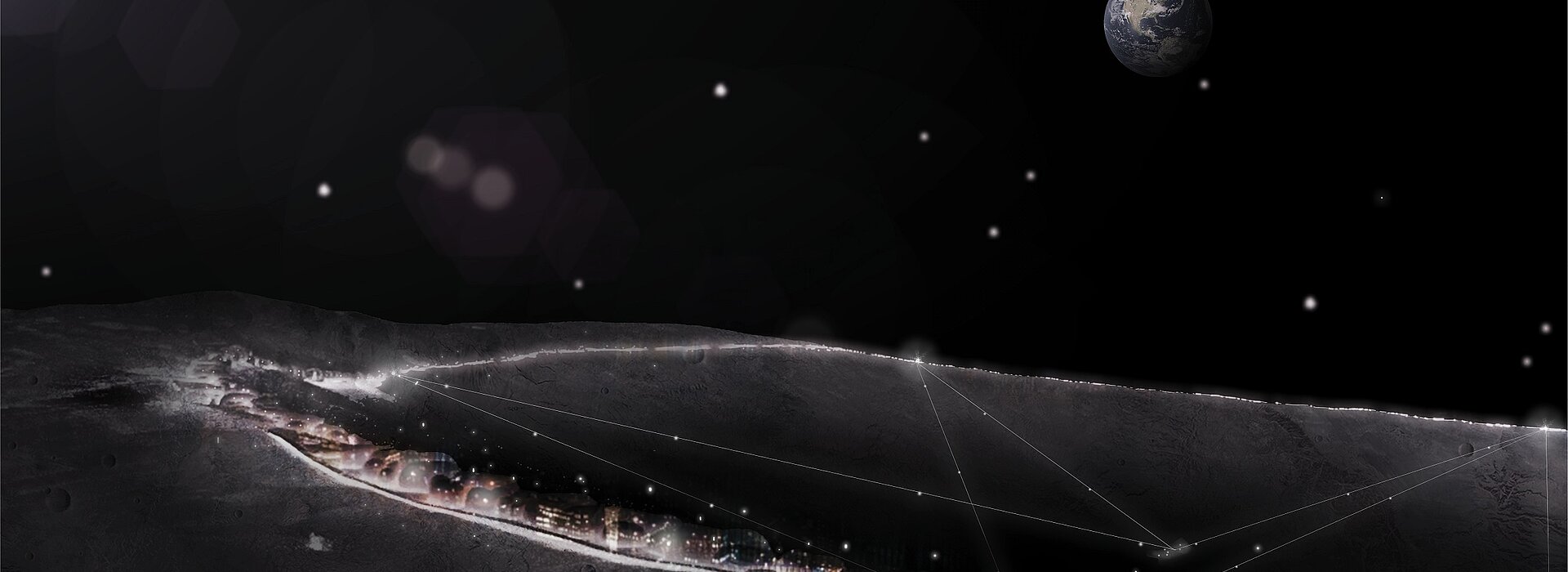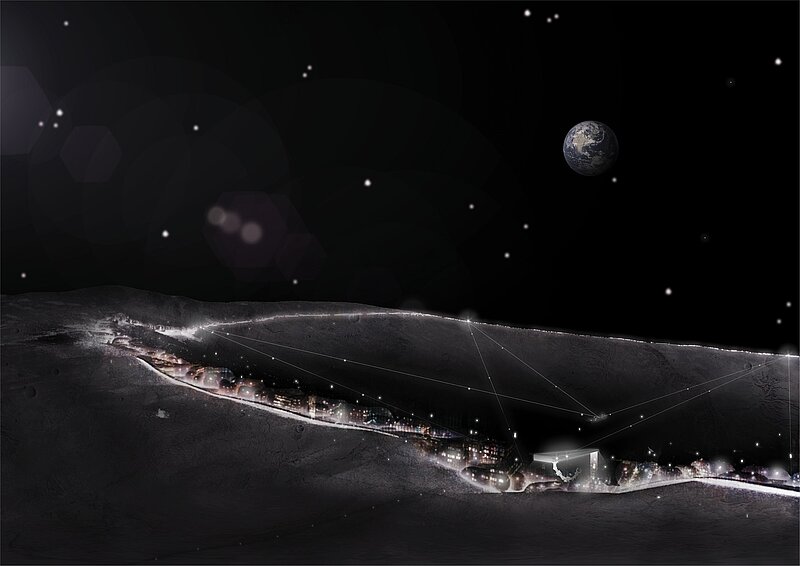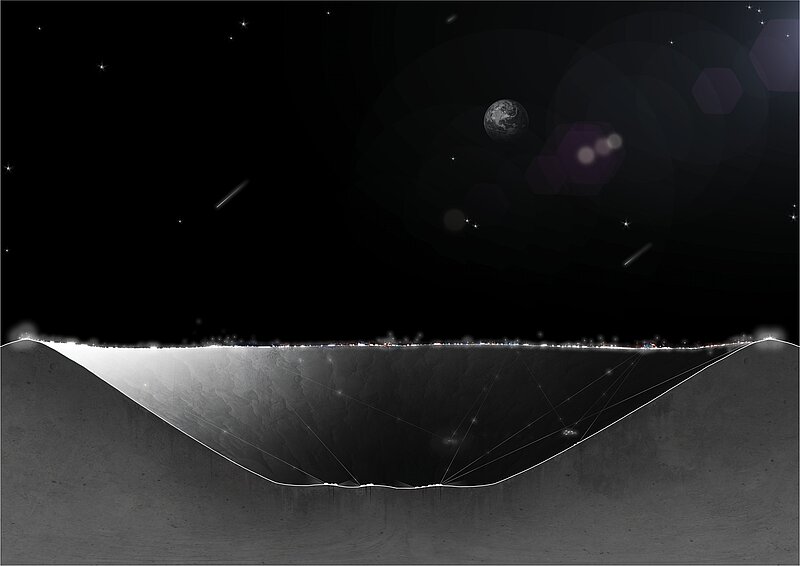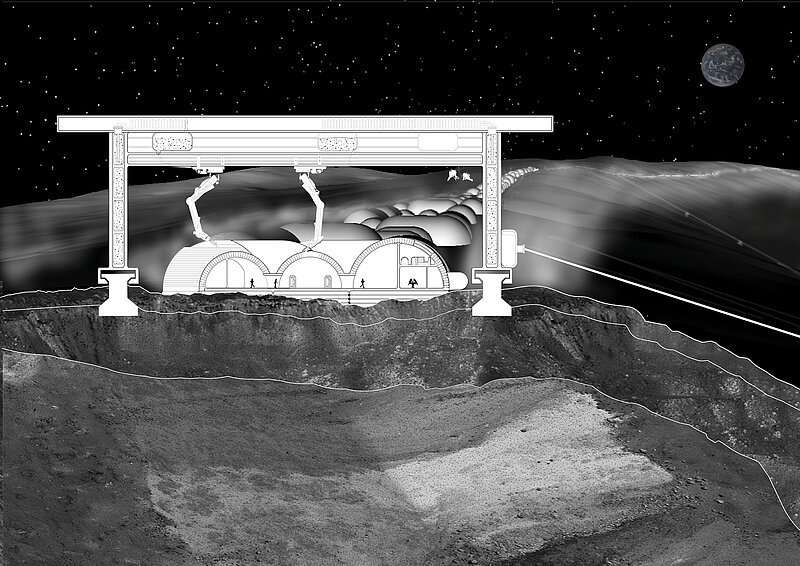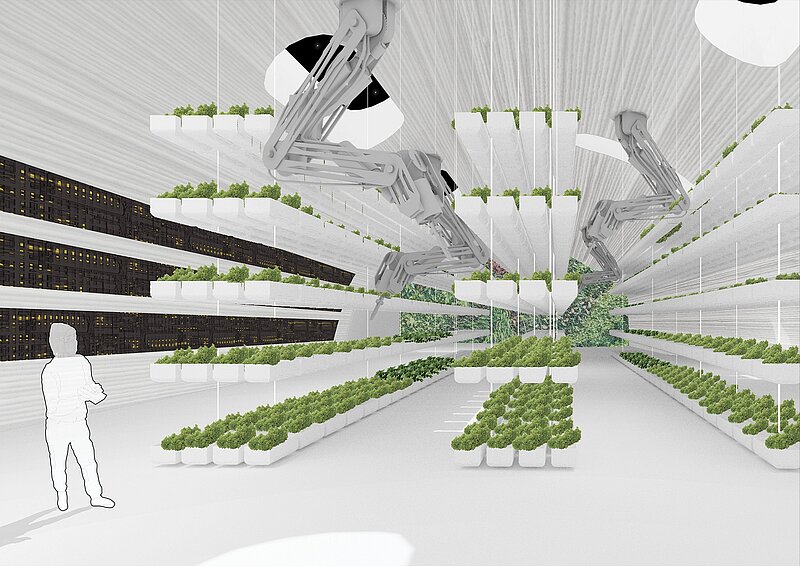Lunaeon A 65 km ring city at the edge of a crater.
- Year2019
- LocationShackleton Crater, Moon
By 2124, lunar mining, research and inhabitation are common practice in small scale outposts to locate water-ice, helium, and other resources beneath the upper layers of the moon’s surface. With Earth’s slow death and continual depletion of resources, the Shackleton Crater on the Moon’s south pole is identified as the most feasible site for humanity’s lunar expansion and inhabitation.
Over a course of decades, Lunaeon is completed to extract resources to fuel and construct habitable research, agriculture & mining programs on the Moon around the rim of the Shackleton Crater. A partnership between nations, private corporations & neutral alliances joined to fund the project. Each will receive a dedicated district arranged around Lunaeon’s circumference. Each district houses programs specifically curated by each group and its population ranging between 30-50 thousand people.
Lunaeon is situated at the highest ground on the lunar south pole which receives perpetual solar light and energy for capture, use, and storage. The initial phase is the magnetic rail system totaling 65 km along the crater’s rim. The magrails act as the path of expansion for Lunaeon and allow for an urban transport system at later phases. On the magrail rests a sliding crane with 3 robotic fabrication arms to 3D print a regolith composite shell into the varying forms of each individual structure.
In the depths of the crater lie the mining facilities which extract water ice, regolith, and helium-3. Scaling up its 15 km slope are the processing towers which convert the raw resources into usable water, composite building material and fuel. The processed materials are sent up to the fabrication crane at the crater rim by cable-cars to begin the fabrication of each district.
